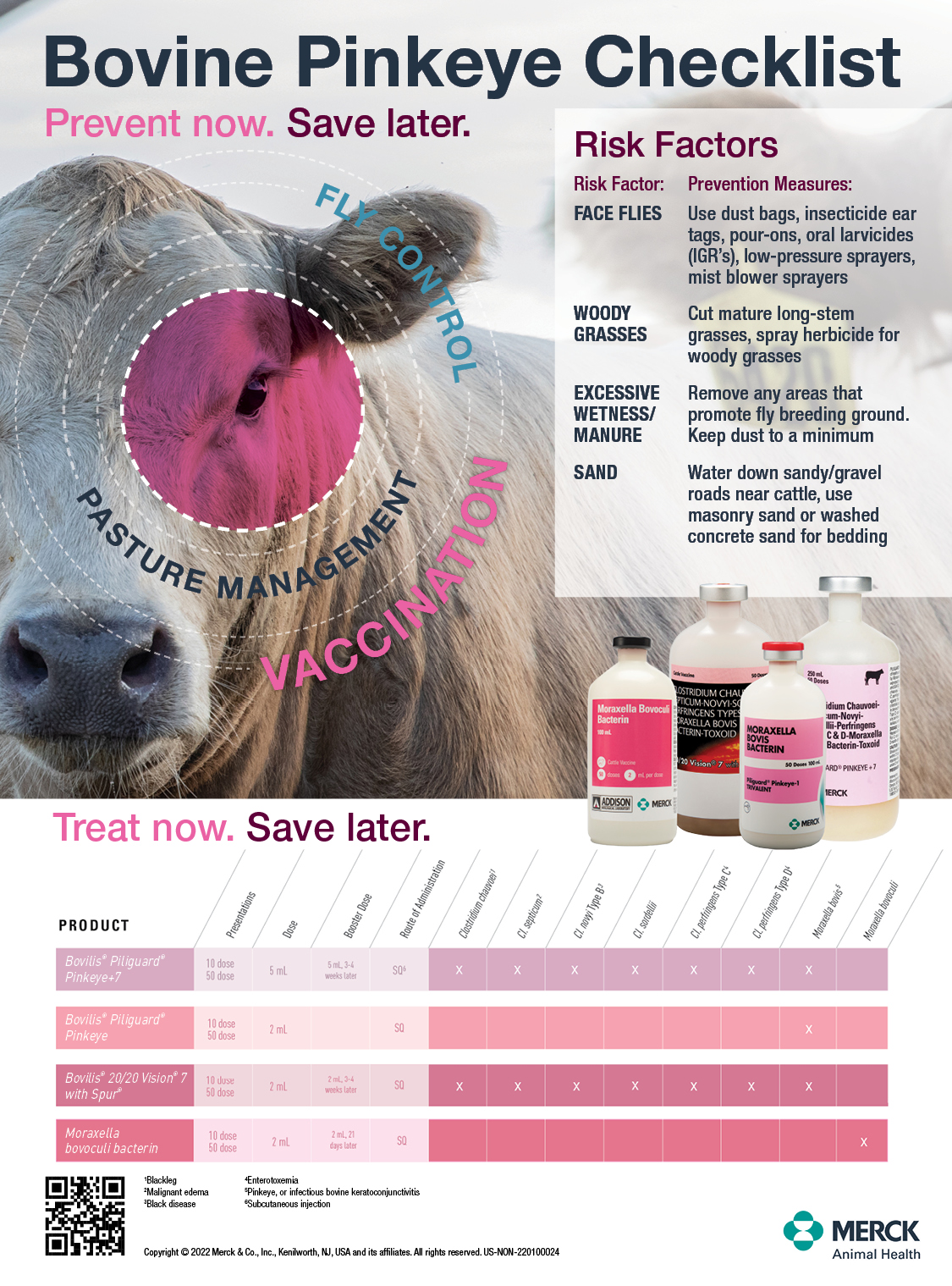Implement a Pinkeye Plan
Download PDF
Setting a strategy now can prevent ROI from being blindsided.
It’s never too early, and certainly not too late, to develop a plan to address bovine pinkeye. But where do you start? According to Dustin Loy, associate professor of Veterinary Diagnostic Microbiology, Nebraska Veterinary Diagnostic Center, University of Nebraska-Lincoln, “An ideal strategy would involve consultation with the producer to fully understand their production systems in addition to disease history and current vaccine and prevention programs. This, combined with a herd visit to understand potential risk factors and causes, can be helpful to develop a strategy that helps meet the producer’s goals.”
Risk factors for bovine pinkeye come in several forms. Among the highest are face flies, woody grasses, hay bales, sawdust and sand. That’s why talking about proper management for these potential eye invaders is key. Also, starting the conversation about eye patches, antibiotics and pour-overs is important. Preventive measures, such
as vaccines like Bovilis® 20/20 Vision® 7 and Bovilis® Piliguard® Pinkeye, can also
keep healthy cattle healthy and protect profits.
Once you’ve completed your consultation and risk investigation, it’s essential to follow up with the prescribed strategy. “Our research shows that because of the time it takes to induce immunity, I would really support that recommendation of treating early and treating as prescribed,” says Dr. Philip Griebel, professor and Canada Research Chair in Neonatal Mucosal Immunology, University of Saskatchewan. “Because there's probably very limited value vaccinating in the face of an outbreak, you need to treat often and treat early.” Dr. John Angelos, DVM, PhD, DACVIM, professor of Medicine and Epidemiology, University of California, Davis, echoes the sentiment of treating early. “The point of giving vaccines sooner is it will allow the animal time to develop an immune response. The general recommendation I have is to start a vaccine series at least four weeks before you would typically expect to see the cases starting to crop up in the herd. Designing herd health programs to help prevent the disease and develop standard operating procedures is fundamental.”
When it comes to preventing pinkeye, prevention is the best medicine, and right now is the time to start the conversation with producers to get a plan in place. That way, they’ll be well on their way to keeping their animals healthy, pain-free and profitable for their operations.
For more information on managing pinkeye, visit https://www.bovinevetonline.com/news/education/pinkeye-afflicting-your-clients-bottom-line
For more information on pinkeye vaccination, visit StopCattlePinkeye.com
Sources:
¹ Dr. Dustin Loy, Associate Professor of Veterinary Diagnostic Microbiology, Nebraska Veterinary Diagnostic Center, University of Nebraska-Lincoln.
² Dr. Philip Griebel, Professor and Canada Research Chair in Neonatal Mucosal Immunology, University of Saskatchewan
³ Dr. John Angelos, DVM, PhD, DACVIM, Professor of Medicine and Epidemiology, University of California, Davis








